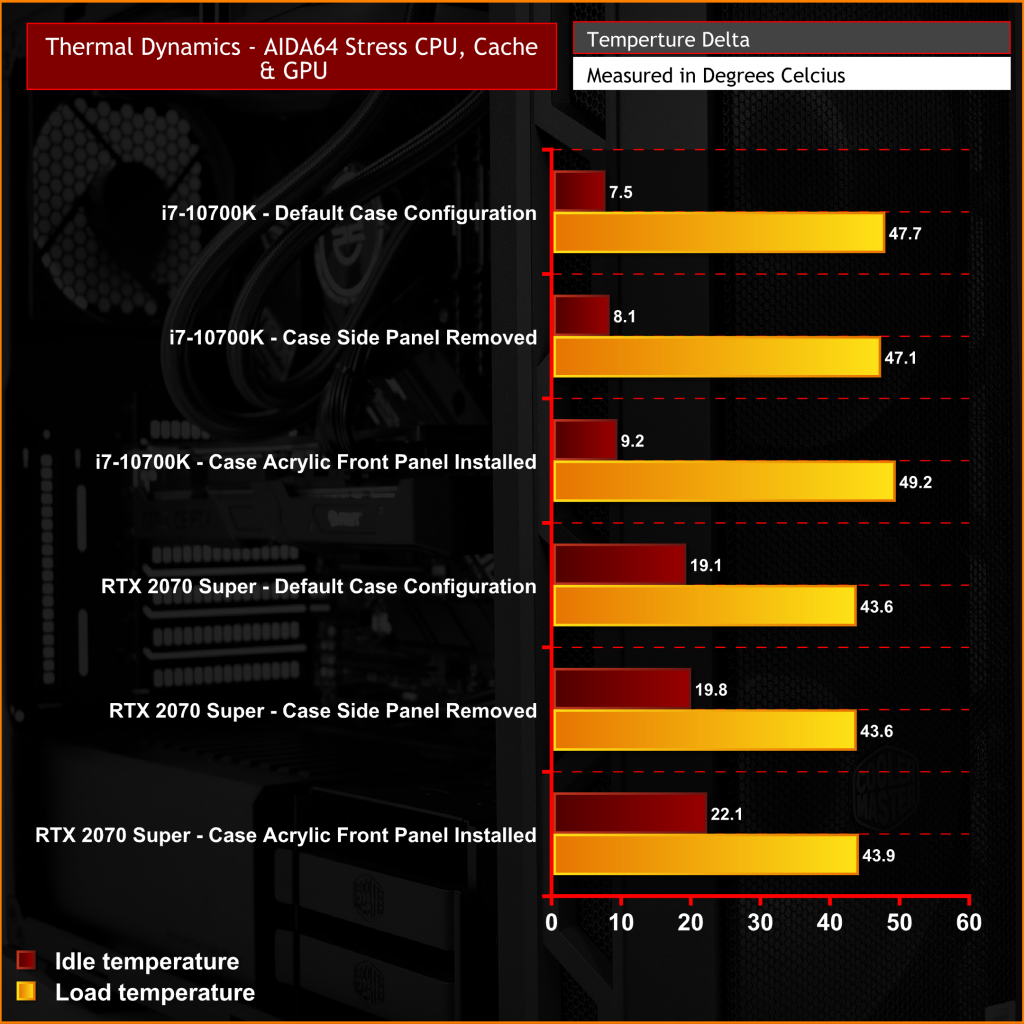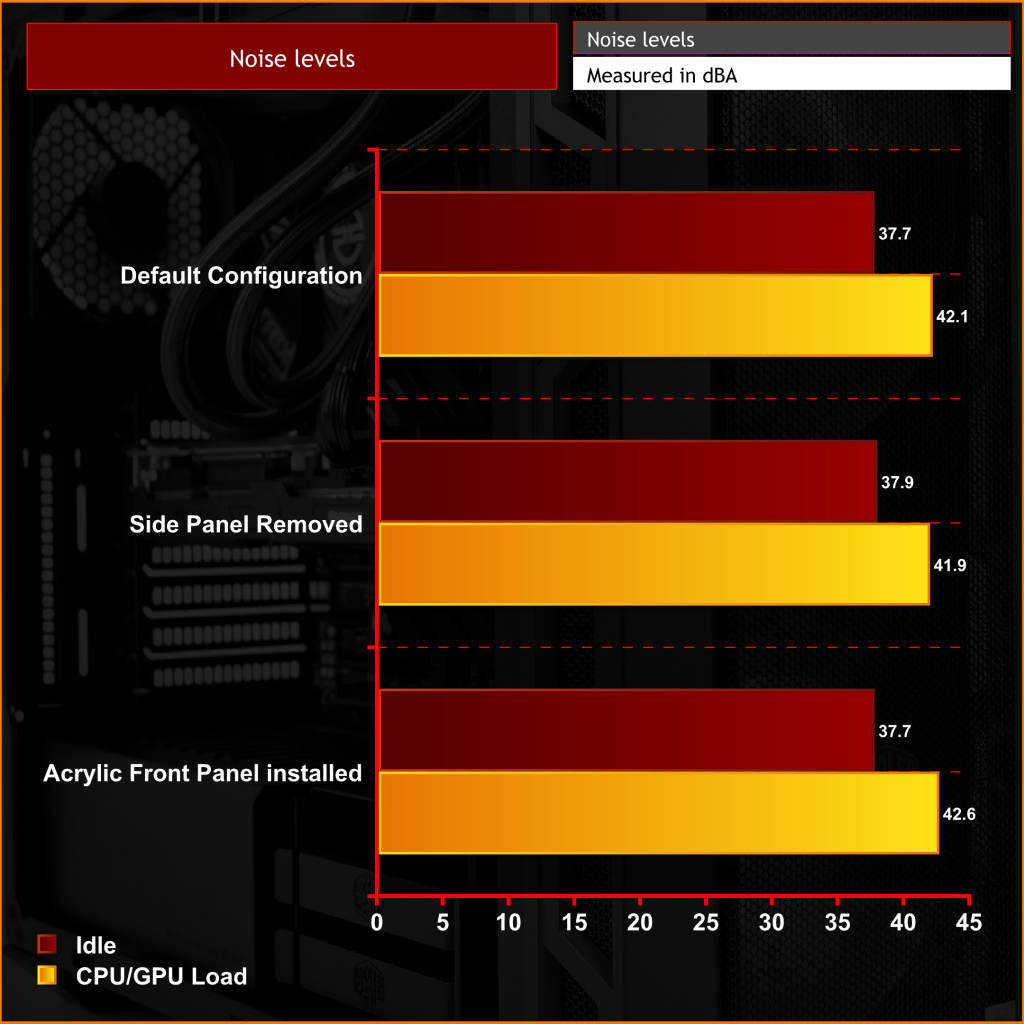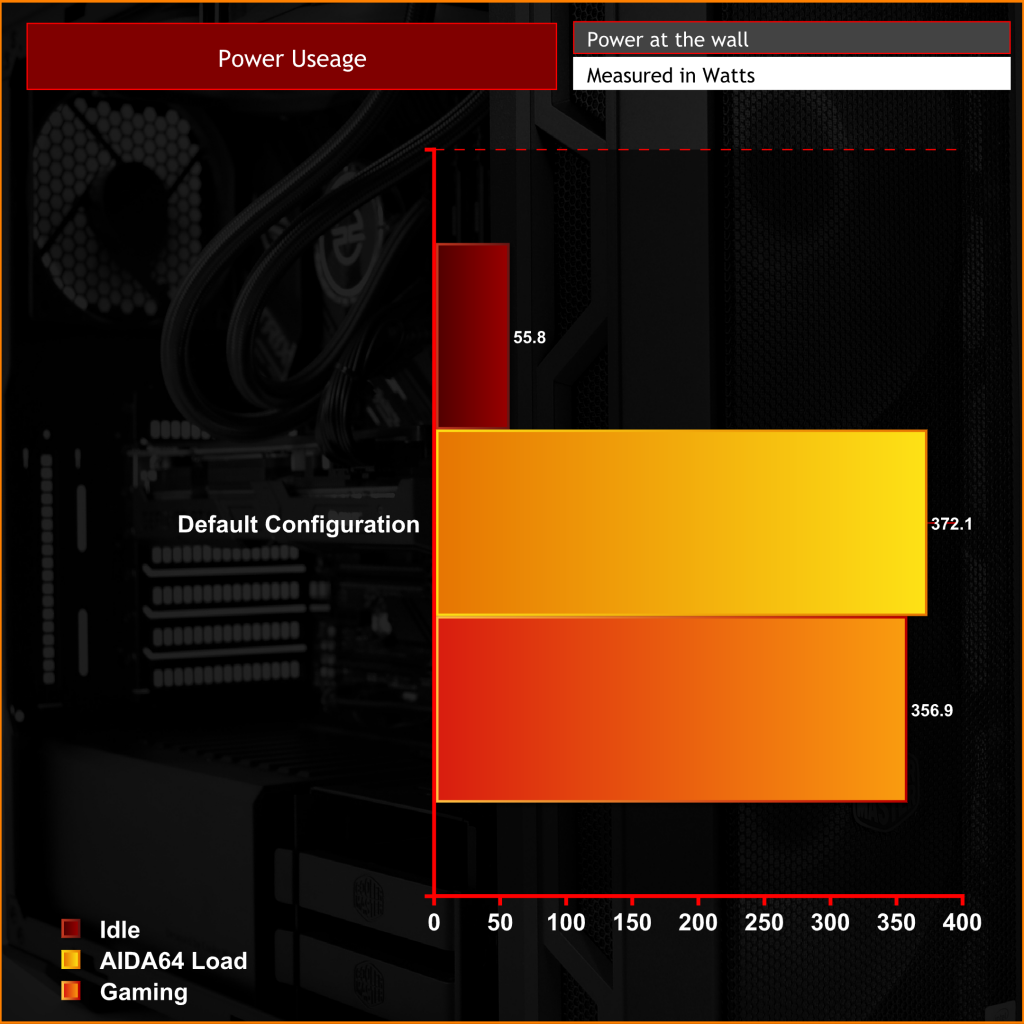Performance: Thermals, Noise & Power
An important characteristic of any gaming PC is how it handles the cooling of the internal components, To see how the PCSpecialist Vortex S3 stacks up, we ran a series of tests with the case in various configurations including thermal tests with the case in its default configuration, with the tempered glass side removed and with the alternate acrylic front panel installed in place of the default mesh.
With the charts below, We can compare thermal performance in each given situation. To measure the cooling performance of the system all fans were left to run in the default configuration that was set by PCSpecialist during assembly, to represent how the system would arrive configured to the customer.
AIDA64 Stress CPU, Cache & GPU, thermal Performance.
PCSpecialist has chosen an effective case for airflow with the Vortex S3. The Cooler Master MasterCase H500 uses a mesh front panel in its default configuration with two 200mm intake fans which helps pull plenty of cool air into the system. During our thermal performance tests, system temperature was excellent with the case in its default configuration.
Removing the side panel or installing the solid acrylic front panel had very little effect on thermal performance, so in either configuration, users will be pleased to know that system temperature will be under control, even during intense heavy workloads.
Noise levels
Like in our thermals test, we test noise levels with the system case in various configurations, to see how this affects noise output. The same configurations from thermal testing will be used to test noise levels. The ambient noise levels (noise floor) in the room is 37.4 dBA. We will run AIDA64 stressing CPU, cache and GPU for 15 minutes to measure noise levels in each configuration. After leaving the system for 30 minutes to cool, we will then measure noise levels with the system idle on the Windows desktop.
During noise level testing all fans in the system will be set to their default setting as they would come configured from PCSpecialist.
Changing the configuration of the case had little effect on noise levels. As we often see with case thermal performance testing, GPU temperature is slightly lower with the side panel removed which means noise levels are at their lowest in this configuration due to the graphics card fan running a little slower. In either configuration, the system noise levels are tolerable under load.
Power Usage
To measure the system’s power usage, first, we leave the system to idle in Windows, with all fans and pumps (where applicable) set to default values and measure power usage at the wall in Watts. Next, using AIDA64 to stress the whole system and with all fans and pumps set to their factory configuration, we again measure the peak power usage at the wall in Watts.
Finally to see how much power the system draws while gaming, we run the Metro Exodus benchmark in a loop ten times and again measure power at the wall in Watts. The results are recorded in the chart below.
In its stock specification, the Corsair 650W power supply installed in the Vortex S3 has more than enough juice to power the hardware with a little left in the tank for future upgrades.
Be sure to check out our sponsors store EKWB here
 KitGuru KitGuru.net – Tech News | Hardware News | Hardware Reviews | IOS | Mobile | Gaming | Graphics Cards
KitGuru KitGuru.net – Tech News | Hardware News | Hardware Reviews | IOS | Mobile | Gaming | Graphics Cards





